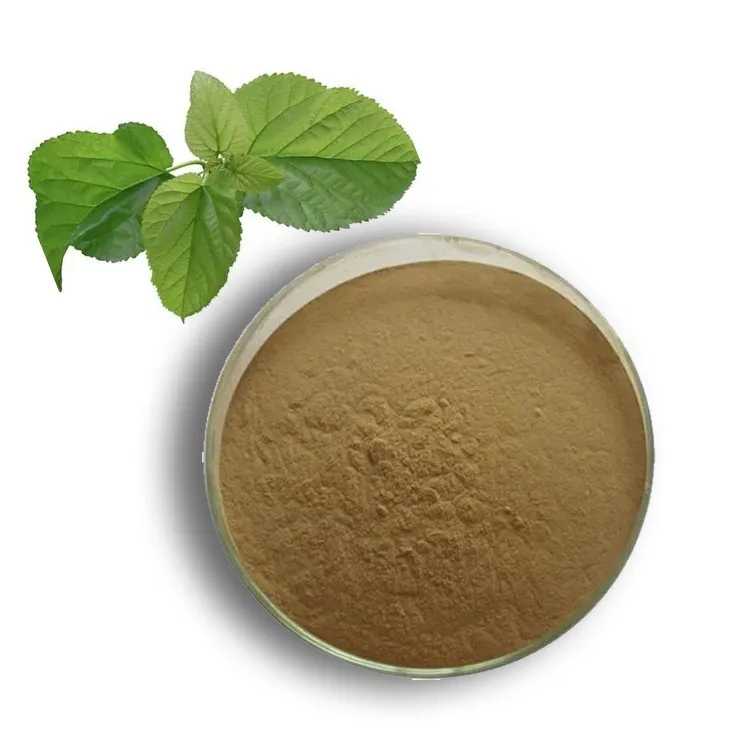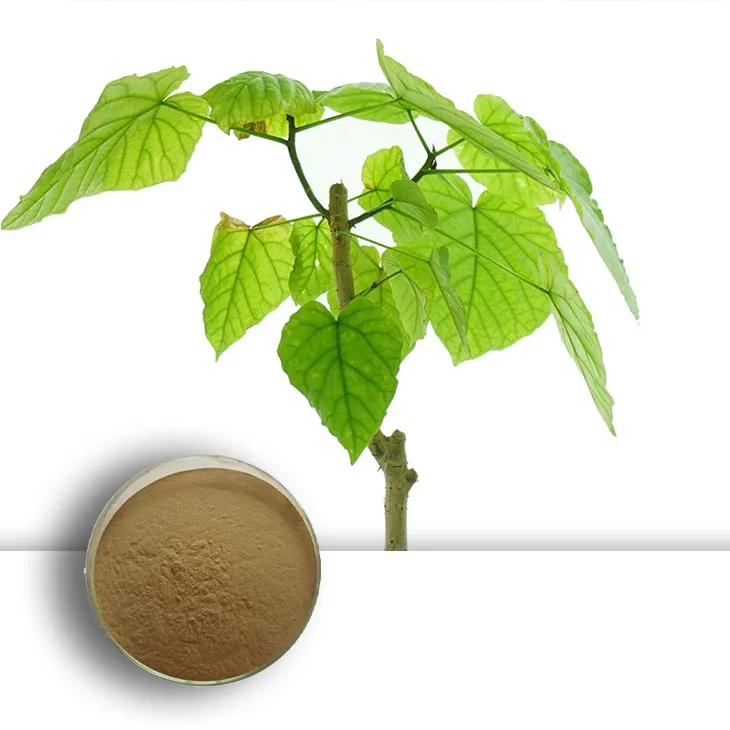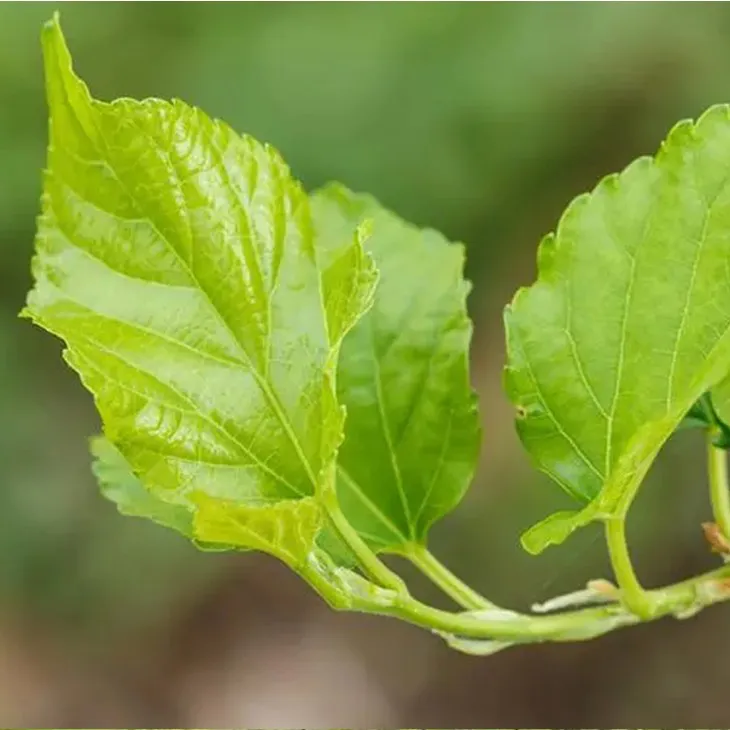- 0086-571-85302990
- sales@greenskybio.com
Mulberry Leaf Extract: Should You Use It for Skin Care?
2024-11-14

Introduction
In the world of skin care, the search for natural and effective ingredients is an ongoing pursuit. Mulberry leaf Extract has emerged as a potentially interesting option. This extract is derived from the leaves of the mulberry tree, which has been used in traditional medicine for centuries. In skin care, it is believed to offer a range of benefits. However, before jumping on the bandwagon and incorporating it into your skin - care routine, it is important to understand what it is, how it works, and what potential drawbacks or limitations it may have.

What is Mulberry leaf Extract?
Mulberry leaf Extract is obtained through various extraction methods from the leaves of the mulberry tree (Morus alba or other Morus species). These leaves are rich in a variety of bioactive compounds. Some of the key components include flavonoids, phenolic acids, alkaloids, and polysaccharides.
Flavonoids
Flavonoids in mulberry leaf extract, such as rutin and Quercetin, are known for their antioxidant properties. Antioxidants play a crucial role in skin health as they help to combat free radicals. Free radicals are unstable molecules that can damage skin cells, leading to premature aging, wrinkles, and dull skin. By neutralizing these free radicals, flavonoids can potentially help to keep the skin looking youthful and healthy.
Phenolic Acids
Phenolic acids like caffeic acid and chlorogenic acid are also present in mulberry leaf extract. These compounds have been shown to have anti - inflammatory effects. Inflammation in the skin can be caused by a variety of factors, including environmental pollutants, allergens, and skin conditions such as acne. By reducing inflammation, phenolic acids may help to soothe irritated skin and improve overall skin condition.
Alkaloids
Alkaloids in mulberry leaves, such as 1 - deoxynojirimycin (DNJ), have been studied for their potential role in regulating blood sugar levels. While their direct impact on skin health in relation to blood sugar regulation is not fully understood, it is hypothesized that by maintaining healthy blood sugar levels, they may contribute to better skin health. High blood sugar levels can be associated with skin problems such as poor wound healing and increased susceptibility to infections.
Polysaccharides
Polysaccharides in mulberry leaf extract are thought to contribute to skin hydration. They can form a thin film on the skin's surface, which helps to lock in moisture. This can result in softer, more supple skin. Additionally, they may also play a role in enhancing the skin's barrier function, protecting it from external irritants and pollutants.

Benefits of Mulberry Leaf Extract for Skin Care
Enhanced Skin Hydration
As mentioned earlier, the polysaccharides in mulberry leaf extract can help to improve skin hydration. When the skin is properly hydrated, it looks plumper, smoother, and more radiant. Dry skin can lead to flakiness, itchiness, and the appearance of fine lines. By using products containing mulberry leaf extract, it may be possible to combat these issues and maintain a healthy moisture balance in the skin.
Improved Skin Texture
The combination of antioxidants, anti - inflammatory compounds, and skin - hydrating elements in mulberry leaf extract can contribute to an improved skin texture. Regular use may lead to a reduction in roughness, an increase in smoothness, and a more even - toned appearance. This can be particularly beneficial for those with rough or uneven skin.
Treatment of Hyperpigmentation
Some studies suggest that mulberry leaf extract may have potential in treating hyperpigmentation. Hyperpigmentation occurs when there is an overproduction of melanin in certain areas of the skin, resulting in dark spots or patches. The flavonoids and other bioactive compounds in the extract may inhibit the activity of tyrosinase, an enzyme involved in melanin production. By reducing tyrosinase activity, it may be possible to lighten hyperpigmented areas and achieve a more uniform skin tone.

Considerations Regarding Mulberry Leaf Extract
Variability in Composition
One important factor to consider is the variability in the composition of mulberry leaf extract. The content of bioactive compounds can vary depending on the source of the mulberry leaves (e.g., different species, regions where they are grown) and the extraction process used. For example, leaves from different Morus species may have different levels of flavonoids or alkaloids. Similarly, extraction methods such as solvent extraction, supercritical fluid extraction, or microwave - assisted extraction can yield extracts with different compositions.
This variability means that the effectiveness of mulberry leaf extract in skin - care products may not be consistent. A product from one brand may work well due to a high - quality extract with a favorable composition, while another product may not be as effective. It also makes it difficult to standardize research on the benefits of the extract, as different studies may be using extracts with different characteristics.
Need for More Research
While there are some promising indications of the benefits of mulberry leaf extract for skin care, more research is needed. In particular, long - term studies on different skin types are lacking. For example, while it may show some potential in treating hyperpigmentation in a short - term study, it is not clear how it will affect hyperpigmented skin over a longer period of time, say, several months or years. Similarly, its safety and potential side effects on sensitive skin, oily skin, or combination skin need to be further explored.
Another area that requires more research is the interaction of mulberry leaf extract with other skin - care ingredients. In a typical skin - care routine, multiple products are used, and these products often contain a variety of ingredients. It is important to understand how mulberry leaf extract will interact with other common ingredients such as retinoids, vitamin C, and alpha - hydroxy acids. These interactions could potentially enhance or reduce the effectiveness of the extract or the other ingredients.
How to Incorporate Mulberry Leaf Extract into Your Skin - Care Routine
If you are interested in trying mulberry leaf extract for skin care, there are several ways to incorporate it into your routine.
Serums
Many skin - care brands now offer serums containing mulberry leaf extract. Serums are typically lightweight and are designed to be applied after cleansing and toning, but before moisturizing. They can penetrate deeply into the skin, delivering a high concentration of active ingredients. Look for serums that list mulberry leaf extract high on the ingredient list, indicating a relatively high concentration.
Moisturizers
Some moisturizers also contain mulberry leaf extract. These can be a good option for those who want to hydrate their skin while also potentially benefiting from the other properties of the extract. When choosing a moisturizer with mulberry leaf extract, consider your skin type. For example, if you have oily skin, you may prefer a lighter, non - greasy moisturizer, while those with dry skin may need a richer formula.
Masks
Mulberry leaf extract - containing masks can be used for a more intensive treatment. Masks are typically left on the skin for a period of time, allowing the ingredients to work more effectively. They can be used once or twice a week, depending on your skin's needs. There are both sheet masks and clay masks available with mulberry leaf extract, each offering different benefits. Sheet masks are often more hydrating, while clay masks may be better for absorbing excess oil and impurities while also delivering the benefits of the extract.
Conclusion
Mulberry leaf extract shows potential as a valuable ingredient in skin care. It offers several benefits such as enhanced skin hydration, improved texture, and potential treatment of hyperpigmentation. However, due to the variability in its composition and the need for more research, especially regarding long - term effects on different skin types and interactions with other ingredients, it is important to approach it with caution. If you decide to try products containing mulberry leaf extract, it is advisable to start with a patch test, especially if you have sensitive skin. By being informed and cautious, you can make the best decision regarding whether or not to incorporate mulberry leaf extract into your skin - care routine.
FAQ:
What are the bioactive compounds in mulberry leaf extract?
Mulberry leaf extract contains various bioactive compounds, such as flavonoids, alkaloids, and polysaccharides. These compounds are believed to contribute to its potential benefits in skin care, like enhancing skin hydration and improving skin texture.
How does mulberry leaf extract enhance skin hydration?
The bioactive compounds in mulberry leaf extract may help to retain moisture in the skin. For example, polysaccharides can form a thin film on the skin surface, preventing water loss. However, the exact mechanism is still not fully understood and needs further research.
Can mulberry leaf extract really improve skin texture?
There is some evidence suggesting that mulberry leaf extract can improve skin texture. It may stimulate collagen production or promote cell turnover. But, due to the variability in its composition, the results may vary among different products and users.
What are the potential risks of using mulberry leaf extract for skin care?
Although mulberry leaf extract is generally considered safe, there are some potential risks. The variability in its composition due to different extraction sources and processes might lead to allergic reactions in some people. Also, as more research is needed to understand its long - term effects, there could be unforeseen risks associated with its long - term use.
Is mulberry leaf extract effective for all skin types?
At present, it is not clear whether mulberry leaf extract is effective for all skin types. While it shows promise in treating certain skin conditions like hyperpigmentation, more research is required to determine its effectiveness and safety for different skin types.
Related literature
- The Bioactive Compounds of Mulberry Leaves and Their Potential Applications in Cosmetics"
- "Mulberry Leaf Extract: A Promising Ingredient for Skin Health - Current Research and Future Perspectives"
- ▶ Hesperidin
- ▶ citrus bioflavonoids
- ▶ plant extract
- ▶ lycopene
- ▶ Diosmin
- ▶ Grape seed extract
- ▶ Sea buckthorn Juice Powder
- ▶ Beetroot powder
- ▶ Hops Extract
- ▶ Artichoke Extract
- ▶ Reishi mushroom extract
- ▶ Astaxanthin
- ▶ Green Tea Extract
- ▶ Curcumin Extract
- ▶ Horse Chestnut Extract
- ▶ Other Problems
- ▶ Boswellia Serrata Extract
- ▶ Resveratrol Extract
- ▶ Marigold Extract
- ▶ Grape Leaf Extract
- ▶ blog3
- ▶ blog4
- ▶ blog5
-
Organic Tongkat Ali extract powder factory.
2024-11-14
-
How to make powder with ashwagandha extract.
2024-11-14
-
Rosehip extract manufacturers from China.
2024-11-14
-
The best cat's claw extract in nature.
2024-11-14
-
Chinese Dandelion Leaf Extract Suppliers.
2024-11-14
-
Licorice Root Extract Powder
2024-11-14
-
Berberis aristata Extract
2024-11-14
-
Acerola Extract
2024-11-14
-
Astaxanthin
2024-11-14
-
Lemon Juice Powder
2024-11-14
-
Camu Camu Extract
2024-11-14
-
Shikonin
2024-11-14
-
Boswellia Serrata Extract
2024-11-14
-
Purple Sweet Potato Extract
2024-11-14
-
Coix Seed Extract
2024-11-14





















